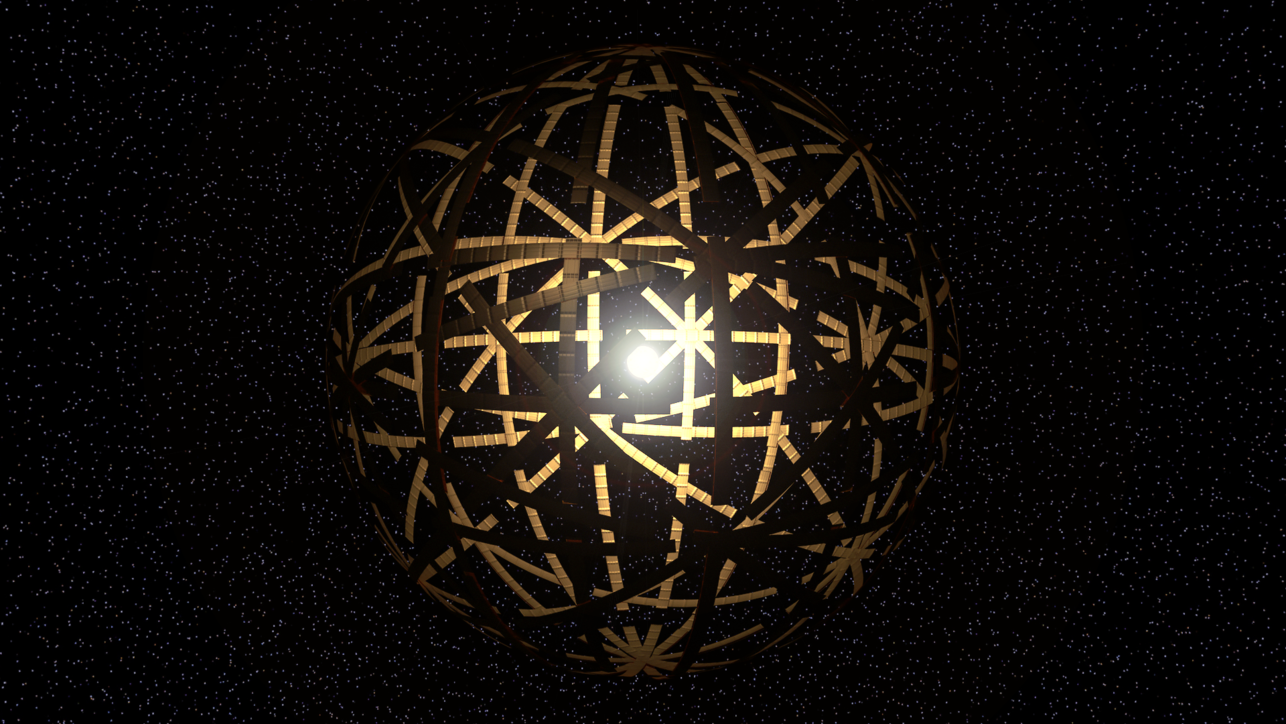
Picture by Kevin Gill, courtesy of Wikimedia
 Copyright © Michael Richmond.
This work is licensed under a Creative Commons License.
Copyright © Michael Richmond.
This work is licensed under a Creative Commons License.
Contents
A Dyson sphere is a structure which allows a very advanced civilization to capture a large fraction of the TOTAL energy output of a star. Imagine large portions of a sphere surrounding the star, coated on the inside with solar cells or some similar technology.

Picture by Kevin Gill, courtesy of
Wikimedia
Pretty cool, right?
How could we detect such structures? If we were lucky, one might be close enough to the Solar System that our best telescopes could show us the structure directly ... but that doesn't seem to be the case.
Rats. Is there any other way to detect a Dyson sphere?
Yes! Look for its spectral signature.
Let me explain. If we measure the spectrum of a typical star -- the power it emits as a function of wavelength -- we see something like this:
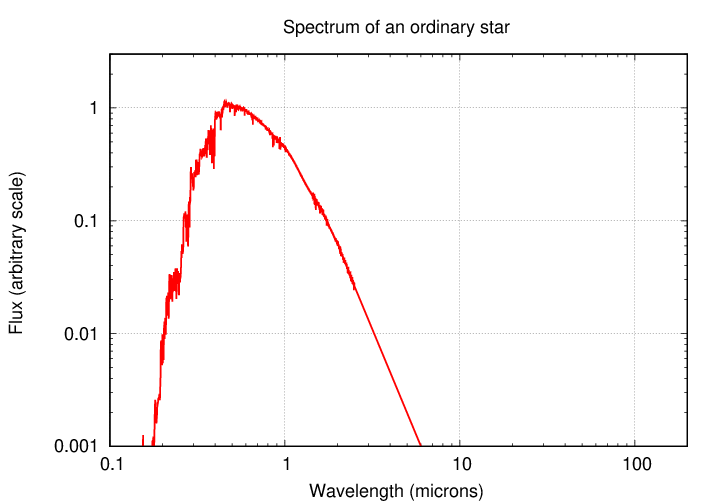
That shape -- a sharp rise at short wavelengths, followed by a gradual decline at longer wavelengths -- is characteristic of thermal blackbody radition. A solid, or very dense gas, will emit this sort of radiation based upon its temperature. Typical stars emit most of their energy in the optical, very much like blackbodies with temperatures of thousands of degrees Kelvin,
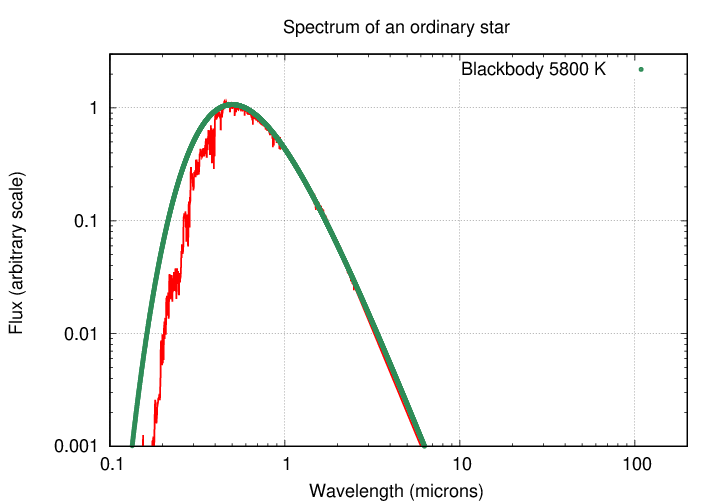
Much cooler blackbodies have a similar spectral shape, but its peak is shifted to longer wavelengths. An object with temperature similar to the Earth will emit most of its energy around 10 microns.
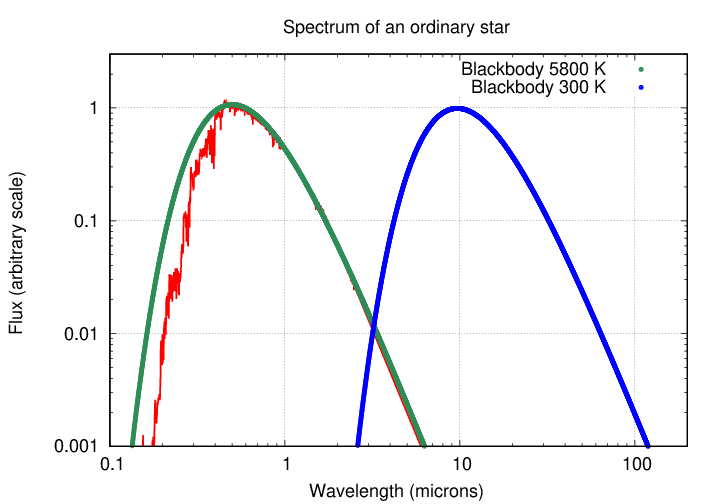
Now, look at this particular Dyson sphere again: it has plenty of holes, so that some of the starlight flies out into space directly. But it also absorbs some of the star's light, and so heats up. If the structure has a radius of roughly 1 AU (the distance from the Sun to the Earth), then it will have a temperature similar to the Earth's temperature; and that means it will emit lots of infrared radiation.

Picture by Kevin Gill, courtesy of
Wikimedia
The sum of the star's light and the sphere's light would have a spectrum something like this:
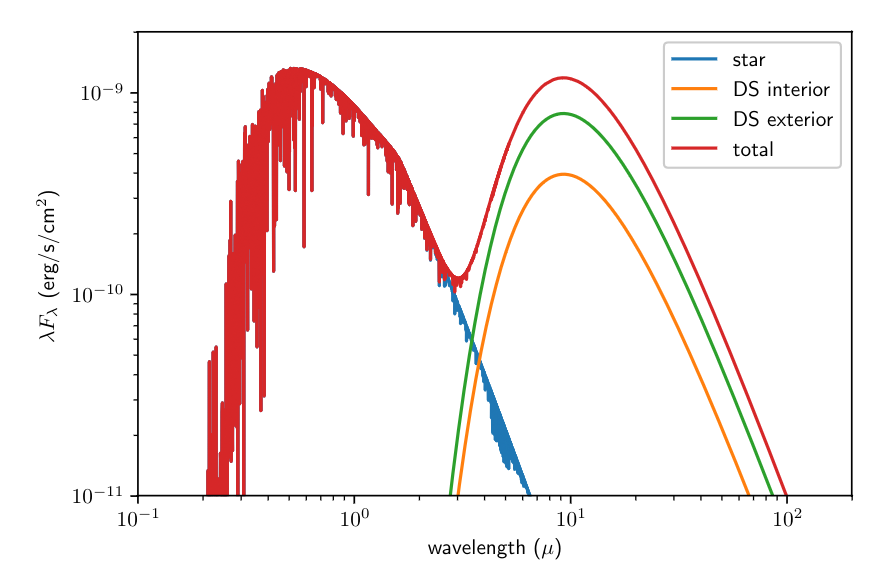
Figure 2 taken from
Wright, J. T., Serbian Astronomical Journal, 200, 1 (2020)
So, one way to look for these giant extraterrestrial structures is to examine the spectra of stars. Lots and lots of stars ....
Let's start by reading the Suazo et al. paper. We'll come to the Contardo and Hogg paper later.
If you have lots and lots of time, you might read a technical paper the same way you might read a novel: Begin at the beginning and go on till you come to the end: then stop. But when I read a paper, I usually take a different approach, one that allows me to determine quickly if I WANT to devote the time it would take to read the whole thing.
(Different scientists will have different approaches, so please don't take the following as the One True Way)
My method for scanning a paper:
 Copyright © Michael Richmond.
This work is licensed under a Creative Commons License.
Copyright © Michael Richmond.
This work is licensed under a Creative Commons License.